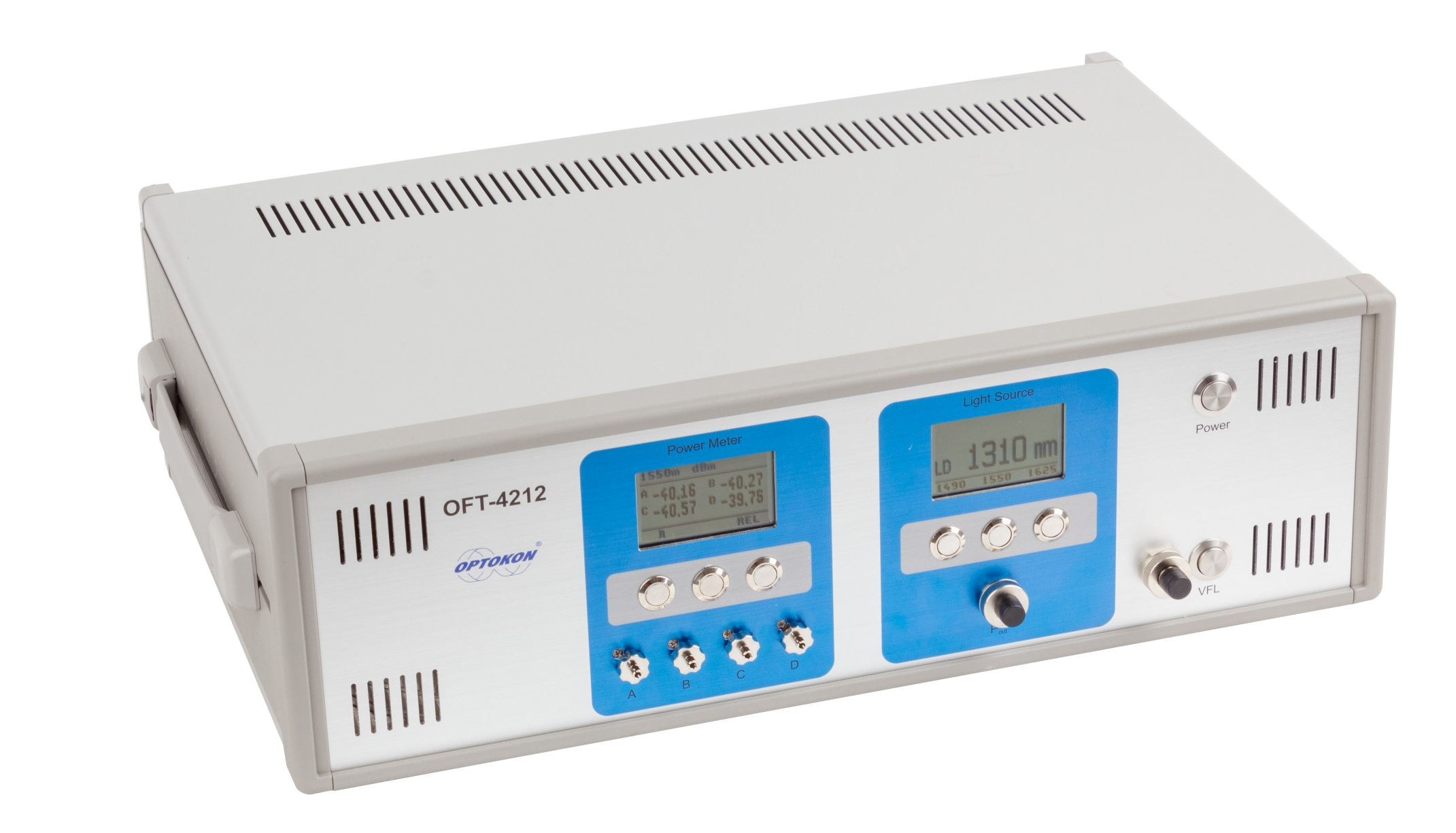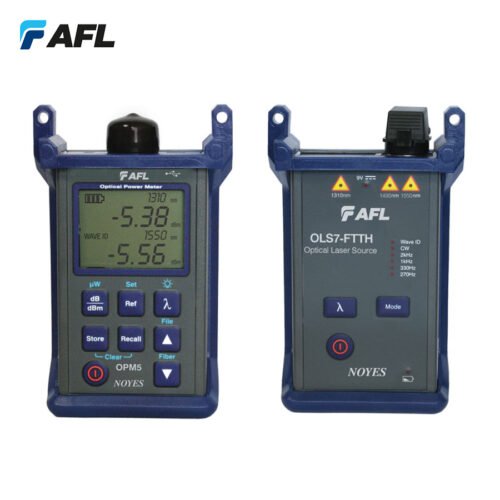Challenges manufacturers face when integrating robotic vision systems
The Importance of an Optical Fibre Diameter Analyser in Maintaining Industry Criteria
The value of an Optical Fibre Diameter Analyser can not be overemphasized in the context of market criteria. This modern technology assures exact dimensions, which are crucial for ideal signal transmission and reduced depletion. By spotting disparities early, producers can support strict quality assurance measures. However, the effects of these dimensions prolong beyond compliance. Revealing the wider effect on system performance exposes intricacies that merit additional exploration.
Comprehending Optical Fibre Diameter Evaluation
Optical fibre diameter analysis plays a crucial duty in making certain the efficiency and dependability of fibre optic systems. Accurate dimension of fibre diameter is crucial, as it directly affects signal transmission effectiveness and overall system honesty. Variations in diameter can lead to raised depletion, reduced transmission capacity, and higher sensitivity to environmental factors.
By employing specific measurement techniques, makers can maintain rigorous quality assurance, ensuring that fibers satisfy sector requirements. This evaluation likewise facilitates the identification of issues or disparities throughout production, permitting for timely rehabilitative actions.
Recognizing the diameter parameters help in the selection of ideal connectors and installations, therefore enhancing compatibility within the network. Generally, comprehensive optical fibre diameter evaluation is a foundational facet of fibre optic technology, underpinning improvements in telecoms, data transmission, and different applications throughout various sectors.
Key Features of Optical Fibre Diameter Analysers
Optical fibre diameter analysers are outfitted with a number of crucial attributes that boost their functionality. Noteworthy among these are precision measurement capabilities, which ensure exact analyses, and real-time surveillance attributes that provide immediate comments during the analysis process. Additionally, a straightforward user interface design helps with easy operation, making these devices accessible to a wider variety of customers.
Accuracy Dimension Capabilities
When it pertains to assuring high-grade fibre manufacturing, accuracy measurement abilities are critical in diameter analysers. These tools use sophisticated innovations to deliver accurate dimensions of fibre diameter, permitting makers to preserve strict resistances. High-resolution optics and advanced algorithms allow the detection of minute variations in diameter, crucial for producing dependable and constant optical fibres. Additionally, the capacity to gauge across a large range of sizes improves versatility, suiting different production demands. The assimilation of calibration requirements ensures that dimensions stay exact gradually, decreasing the threat of flaws. By employing these accuracy measurement capabilities, suppliers can support sector requirements, boost product top quality, and eventually drive consumer contentment in the competitive fibre optics market.
Real-Time Surveillance Features
Real-time tracking functions are essential for improving the efficiency and efficiency of fibre manufacturing processes. These abilities make it possible for continuous analysis of optical fibre diameter throughout manufacturing, making certain that any variances from defined standards are promptly spotted. By supplying instant comments, producers can without delay change parameters, minimizing waste and keeping quality control. Furthermore, real-time tracking promotes the recognition of trends and patterns in production data, using beneficial insights for process optimization. The combination of these features into optical fibre diameter analysers supports positive decision-making, encouraging operators to respond swiftly to potential problems. As a result, the application of real-time tracking not just upholds industry standards but likewise enhances total performance and item integrity.
User-Friendly User Interface Layout
A properly designed interface is essential for the reliable operation of optical fibre diameter analysers. Such interfaces prioritize simpleness and access, permitting users to navigate the system with convenience. Trick functions typically include intuitive food selections, clear graphical representations of data, and adjustable setups to accommodate numerous user preferences. Real-time responses systems boost the user experience by offering immediate understandings into dimensions. In addition, efficient error messaging overviews users in troubleshooting problems swiftly, minimizing downtime. The unification of touchscreens and receptive styles further promotes interaction, making it easier for technicians to operate the analyser in varied atmospheres. Inevitably, a straightforward interface not only enhances performance but additionally enhances the general precision of the measurements, adding to industry criteria in optical fibre manufacturing.
The Duty of Diameter Measurement in High Quality Control
Diameter dimension may seem like a minor information in the manufacturing of optical fibres, it plays a significant function in making certain general top quality control. Consistency in diameter is crucial for maintaining the optical efficiency and architectural integrity of the fibres. Variations in diameter can bring about issues such as signal loss, enhanced attenuation, and minimized tensile toughness, ultimately jeopardizing the integrity of the fibre in numerous applications.
Quality assurance procedures include precise diameter measurement to identify flaws early in manufacturing. By applying an optical fibre diameter analyser, producers can determine any type of variances from defined resistances, assisting in prompt rehabilitative activities. This aggressive strategy not only enhances product quality however likewise lessens waste and minimizes manufacturing prices.

Compliance With Sector Criteria and Rules
Compliance with sector standards and guidelines is critical for the precise operation of an optical fibre diameter analyser. Sticking to More hints these standards guarantees that manufacturers preserve quality assurance throughout the production procedure. Fulfilling regulatory requirements not only improves item integrity but likewise promotes customer depend on.
Making Sure Quality Assurance
Making sure adherence to sector criteria is essential for maintaining the stability and performance of optical fibre products. Quality assurance plays a pivotal role in this process, as it involves the systematic monitoring of fibre diameter to guarantee consistency and dependability. An optical fibre diameter analyser is an important device in attaining these top quality criteria, supplying exact dimensions that assist determine discrepancies from established specs. By utilizing this technology, manufacturers can promptly detect and address any kind of abnormalities, making sure that items satisfy the needed performance criteria. Normal analysis via such analysers not just sustains product high quality but also improves consumer trust fund and satisfaction. Ultimately, durable top quality control actions cultivate an affordable edge in the optical fibre industry, advertising long-term success and compliance with standards.
Fulfilling Regulative Requirements
As makers browse the complexities of the optical fibre sector, meeting regulatory demands comes to be vital for ensuring item security and performance. Conformity with market requirements not just minimizes prospective threats however also improves customer confidence in the items offered. An optical fibre diameter analyser plays a critical duty in this process, enabling manufacturers to confirm that their items stick to defined measurements and tolerances. By utilizing such analyzers, firms can ensure that their optical fibers meet the rigid regulations stated by market authorities. This positive strategy to quality control not only helps with compliance yet likewise enhances the production procedure, decreasing the probability of pricey recalls or beings rejected. Inevitably, adherence to regulative criteria is critical for keeping an one-upmanship out there.
Benefits of Accurate Diameter Measurement

Precise diameter measurement plays a vital function in the performance and dependability of optical fibres. Guaranteeing that fibres fulfill defined diameter tolerances lessens signal loss and optimizes transmission effectiveness, straight influencing total system efficiency. This accuracy is crucial in preserving ideal light proliferation, as even minor inconsistencies can bring about boosted attenuation and diminished optical signal top quality.
In addition, precise measurements boost compatibility between parts in fibre optic systems, promoting seamless integration and lowering the danger of failures. Constant diameter measurements likewise contribute to enhanced manufacturing procedures by identifying prospective defects early, as a result reducing waste and lowering production prices.

Integrating Optical Fibre Diameter Analysers Into Manufacturing
Incorporating optical fibre diameter analysers right into manufacturing processes enhances the capability to preserve stringent quality assurance measures. By employing these analysers, producers can accomplish exact and regular measurements of fibre diameters, which is vital for making certain item efficiency her response and integrity. The assimilation procedure typically involves positioning analysers at essential factors along the manufacturing line, making it possible for real-time monitoring and immediate feedback on diameter variants.
This aggressive approach permits fast changes to the production criteria, lowering the danger of issues and waste. Additionally, the data collected can be utilized for statistical procedure control, adding to constant enhancement efforts. Operators are empowered with workable insights that assist in notified decision-making regarding product usage and manufacturing techniques. Inevitably, the incorporation of optical fibre diameter analysers not just enhances item quality however also supports compliance with market standards, enhancing a company's track record for quality in the competitive optical fibre market.
Future Trends in Optical Fibre Measurement Technology
Emerging advancements in optical fibre measurement modern technology are poised to reinvent the industry. The consolidation of expert system and maker news learning is prepared for to enhance precision and performance in diameter analysis. These innovations make it possible for real-time data processing, enabling for prompt changes during production, consequently lessening waste. Additionally, the growth of non-contact dimension techniques promises a reduction in physical interaction with fibers, maintaining their honesty.
In addition, miniaturization of dimension devices is expected to lead to more portable and user-friendly services, assisting in on-site assessments. optical measurement system. Assimilation with IoT platforms will make it possible for remote surveillance and information collection, promoting enhanced anticipating maintenance and high quality control
As industries increasingly demand greater efficiency requirements, the development of optical fibre measurement tools will certainly play a critical role in meeting these assumptions, making certain that suppliers can continually supply top notch products while adhering to rigorous governing requirements.
Frequently Asked Inquiries
Just How Usually Should Optical Fibre Diameter Measurements Be Carried Out?
Frequency of optical fibre diameter dimensions commonly depends on manufacturing quantity and top quality needs. Normal checks, usually day-to-day or once a week, aid assure regular top quality and adherence to requirements, lessening prospective flaws in fibre manufacturing processes.
What Are the Common Costs of Optical Fibre Diameter Analysers?
The typical prices of optical fibre diameter analysers differ commonly, ranging from several thousand to 10s of thousands of bucks, depending on functions, precision, and manufacturer, influencing choices for services buying quality dimension innovation.
Can Diameter Analysers Be Calibrated On-Site?
Diameter analysers can often be adjusted on-site, enabling instant adjustments to assure precision. However, the certain treatments and requirements might differ depending on the maker's standards and the innovation made use of in the analyser.
What Kinds of Fibres Can Be Measured With These Analysers?
Optical fibre diameter analysers can gauge different fibre kinds, including single-mode, multi-mode, specialty, and large-core fibers. Each type needs specific calibration setups to guarantee exact and reputable diameter dimensions throughout the production procedure.
Are There Details Maintenance Demands for Diameter Analysers?
Diameter analysers require routine calibration to ensure precision, in addition to regular cleansing to avoid particles accumulation. Additionally, checking software updates and examining mechanical elements add to their suitable performance and longevity in gauging fibre sizes efficiently.